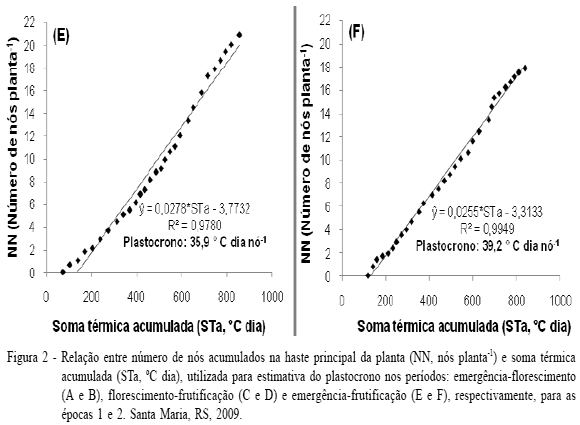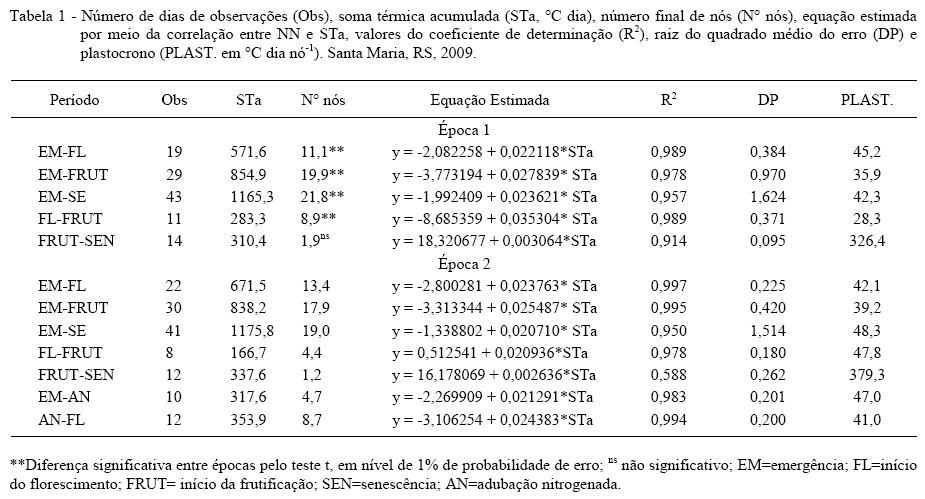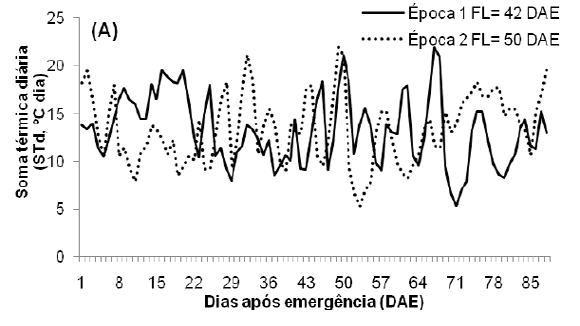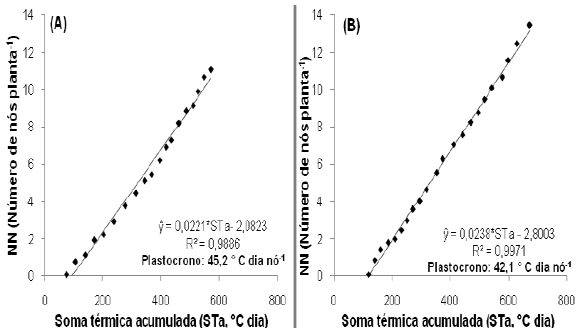A parameter used in the development plants models simulation development is the time interval between the appearance of two successive nodes on a stem, known as plastochron, with units of °C day node-1. The objective of this study was to estimate the plastochron in crambe (Crambe abyssinica Hochst) plants grown in two sowing dates: 18/06/08 and 12/07/08. The cultivar used was the 'FMS Brilhante', with density adjusted to 100 plants m-2. In each period 77 plants were randomly selected, and the number of nodes were counted every two days. The plastochron was estimated by the inverse slope of the linear regression between the number of accumulated nodes on the main stem and accumulated thermal time after the emergence. The crop cycle was divided into subperiods in order to assess caloric demand for each development stage. The plastochron ranged from 42.1 to 45.2°C day node-1 during the subperiod emergence to early flowering and from 28.3 to 47.8°C day node-1 during the beginning of the flowering subperiod to the onset of fruiting. Different sowing dates and development subperiods have an effect on the plastochron in crambe. The best division of the cycle is the emergence to early flowering and early flowering to the onset of fruiting to obtain reliable estimates of plastochron crambe.
Crambe abyssinica Hochst; node appearance; plant development; thermal time






